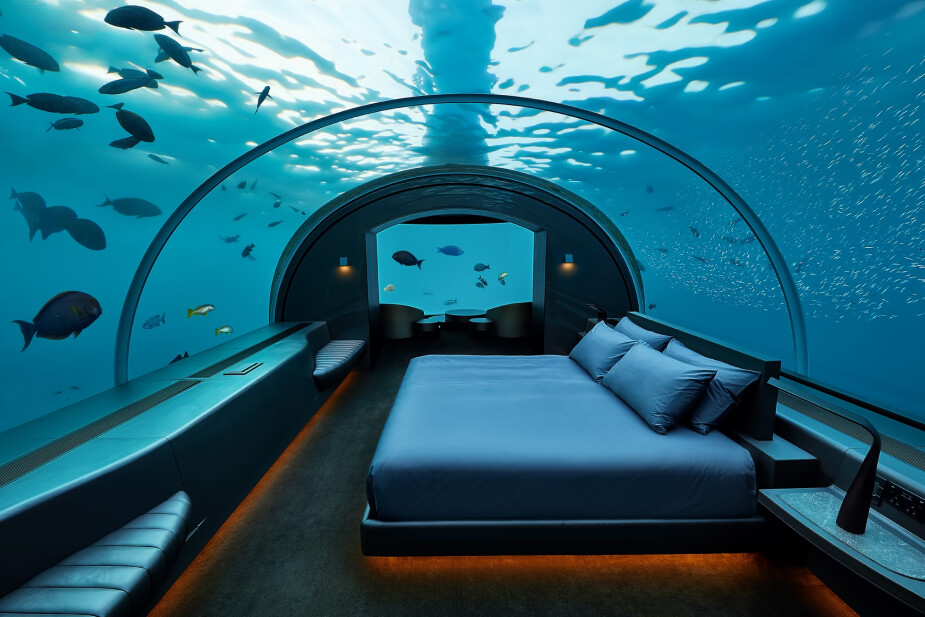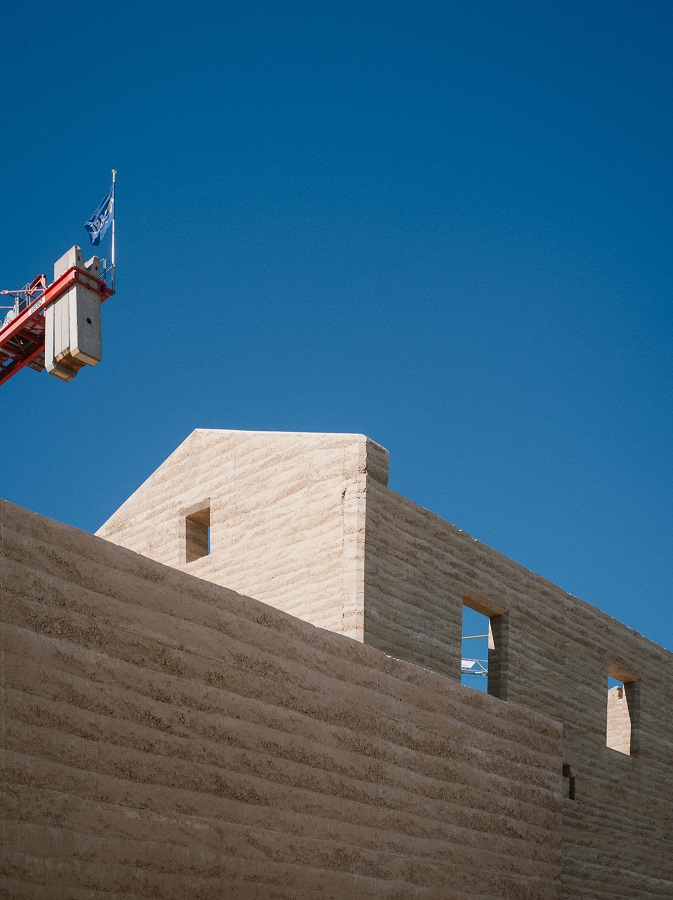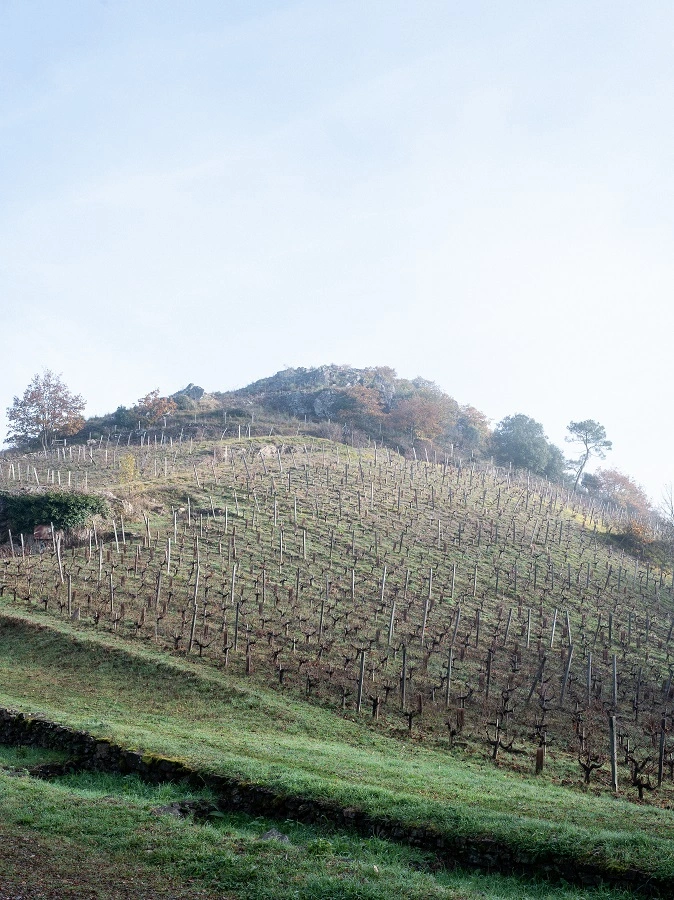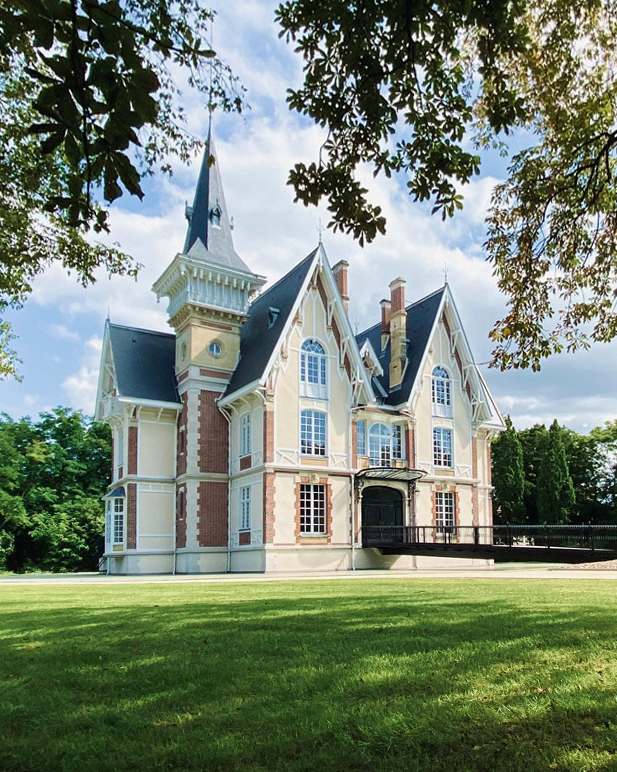Building and renovating a hotel with an architect: guide and advice
Hotels - Programming, refurbishment, upgrading.


Are you planning to build or renovate a hotel and looking for the ideal architect for your project?
What makes a hotel a 4* or 5* hotel goes beyond its prestigious range of services.
It's also due to the multitude of details that make a hotel stand out from the crowd.
These include architectural style, finishes, decoration, objets d'art, room size and facilities, and choice of materials.
These are all things that keep guests coming back, recommending and appreciating the hotel.
So when you're aiming for an extra star, you can't afford to neglect them: to be exceptional without going astray, with originality and precision.
That's why we choose the best architects for hotel construction and renovation.
Contents – Hotel construction and renovation:
- 1. The starting point for a hotel construction or renovation project: Programming
- 2. Objectives of a hotel construction or renovation project
- 3. Define your hotel’s target market
- 4. The architect’s mission
- 5. BAM Concours’s mission
- 6. What type of architect should I choose for a hotel construction or renovation project?
1. The starting point for a hotel construction or renovation project:
The programme
First of all, you need to define your project as precisely as possible.
What are the needs to be met?
What will the hotel look like?
How many rooms, what services, what kind offacilities?
This questioning phase is called programming.
It’s essential to set as many parameters and directions as possible, so that a team of architects and interior designers can work serenely together.
This is how BAM concours assists leading hoteliers in this programming phase.
We also help them launch calls for tender with well-known hotel architecture firms.
How we helped Leader Hotels build a 5-star eco-friendly hotel in Martinique.
Discover the project2. The objectives of a hotel construction or renovation project
Renovation
Refreshing a building, bringing it up to standard, changing its universe, attracting a new type of clientele (business, leisure or both), moving upmarket and surpassing excellence, or boosting sales are all valid reasons for renovating your hotel.
In each case, renovation will help restore or reinforce the hotel’s identity.
As a result, customer experience and loyalty will be positively impacted.
Construction
When it comes to planning and designing a hotel, there are an infinite number of possibilities.
Indeed, this represents an extremely interesting opportunity for architects and interior designers to let their creativity and imagination run wild.
Both in the choice of building form and in the selection of materials.
In this way, they will be able to create a real identity for the hotel through its construction, while respecting the defined concept.
3. Defining the desired world of your hotel
The type of architecture
The image conveyed is becoming increasingly crucial, and a hotel must have a unique architectural style that will make a difference and leave a lasting impression on your guests.
And to achieve this, it’s essential to create an original environment that will surprise them.
Together with the architect, you need to define the architectural concept: what style should your hotel have?
Futuristic, contemporary, palace style… Several choices are possible, and the architectural style must be chosen according to the type of clientele targeted.
The architectural style chosen may also depend on the hotel’s location.
For example, an architectural style in keeping with the town’s traditional style.
Or a style that blends in with the hotel’s surroundings: nature, the seaside…
Experience tourism
Offering guests more than just a nice hotel is essential: you have to give them the opportunity to enjoy a real experience.
This can be achieved through the services offered.
For example, a modern spa with subdued lighting to create an atmosphere conducive to relaxation.
It may also be a good idea to create spaces specifically for the experience.
For example, a relaxation room, an art room, a light show with optical effects, unique spaces where customers can escape their daily lives and enjoy an experience.
More and more, hotels are turning to an experience linked to nature and the environment.
This means opening up their rooms to green spaces or offering total immersion in nature.
This is green tourism.
As a result, common spaces are no longer enclosed, and the boundaries between indoors and outdoors are blurred, resulting in an optimized customer experience that is increasingly in demand.


Hôtel Barrière, Le Normandy Deauville – Vous Êtes Ici Architectes
a. The materials
Durability
Because a hotel construction or renovation project is a major undertaking, it’s important to consider the durability of materials when choosing them.
The architect will be able to select the most appropriate materials based on a number of factors.
These include architectural style, location and weather conditions.
In the case of a renovation project, he will know which materials to prefer, taking into account the state of the existing heritage to ensure its stability over time.
The choice of materials will play a decisive role in respecting the environment and the durability of the building itself.
Ecology
The trend is towards ecology , and all activities must integrate a form of environmental respect into their operations.
Indeed, a more humble form of tourism has emerged in recent years, and many guests are looking for this connection with nature in their stay, without superfluity.
Wood is obviously the material most often used in this ecological approach, combined with insulating materials such as flax, hemp or straw…
In addition, you can install systems to reduce water consumption in the bathroom and toilets.
You should also consider choosing eco-friendly linens – sheets, towels and mattresses – such as organic cotton or linen.
Building an eco-friendly hotel also means giving preference to local resources and materials, and building as respectfully as possible to minimize the site’s carbon footprint.
For example, solvent-free paints are preferable.
Of course, the use of plastics is also to be avoided, as is the correct orientation of rooms and other spaces to limit energy consumption.


b. Common areas
Lobby
The lobby is the first thing the customer sees.
That’s why it has to make a big impression : high ceilings, lighting, objects, decoration, colors, reception counter.
In addition, integrating technology into the concept can be an interesting way of offering a different customer experience and accentuating the hotel’s contemporary or futuristic feel: tablets and screens can be installed in the lobby.
Bars, restaurants
In today’s hotel complex, the restaurant and bar are the most frequentedcommunal areas.
This also means installing kitchens that are adapted to and comply with recommended hygiene standards (HACCP and safety standards).
The aim is to optimize circulation spaces to maximize comfort and service efficiency.
In terms of architecture, comfortable furniture is essential to make customers want to stay longer.
Nor shouldlighting be neglected: subdued lighting in the evening is preferable, and natural light during the day.
Finally, top-of-the-range is obviously to be found in the details: the crockery and materials chosen.
Use noble wood for the tables, marble for the floor, carpets and designer objects… depending on the style you’ve chosen.
Spas, pools and gyms
Spas, pools and gyms enhance the customer experience.
Above all, of course, hygiene standards must be respected and taken into account when designing the building.
When it comes to pool cladding, the trend is towards natural materials: slate, wood, stone… Mosaics also always make an impact, intensifying the water’s reflections to create a summery ambience.
For eco-friendly hotels, natural pools are very popular with guests.
These original pools are surrounded by vegetation.
They do, however, require a great deal of maintenance, but they do their job.
The more spaces dedicated to the well-being and relaxation of guests, the more likely they are to return and recommend the hotel.
It’s all about using exceptional materials and creating original atmospheres.
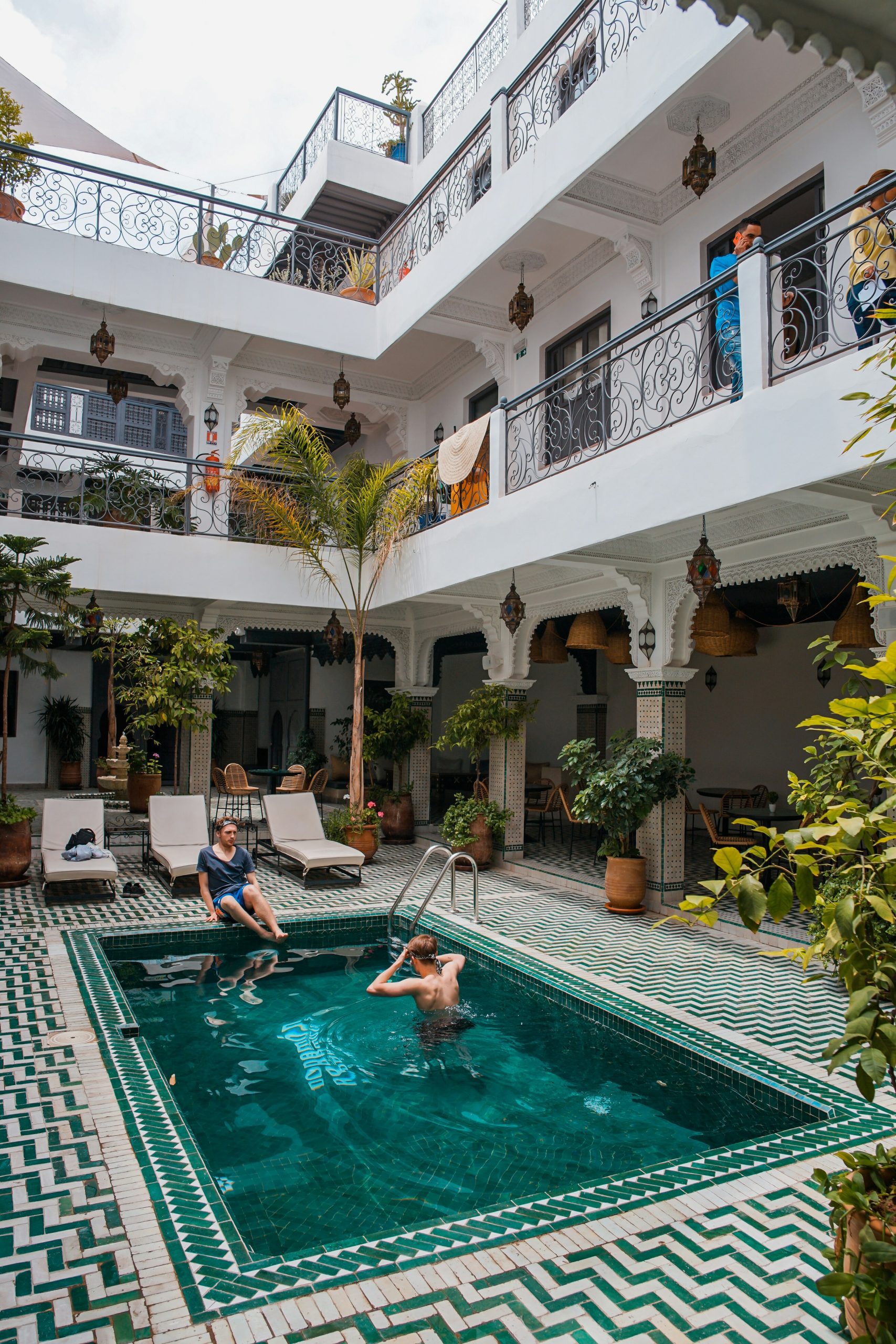

The Central House Medina – Marrakech
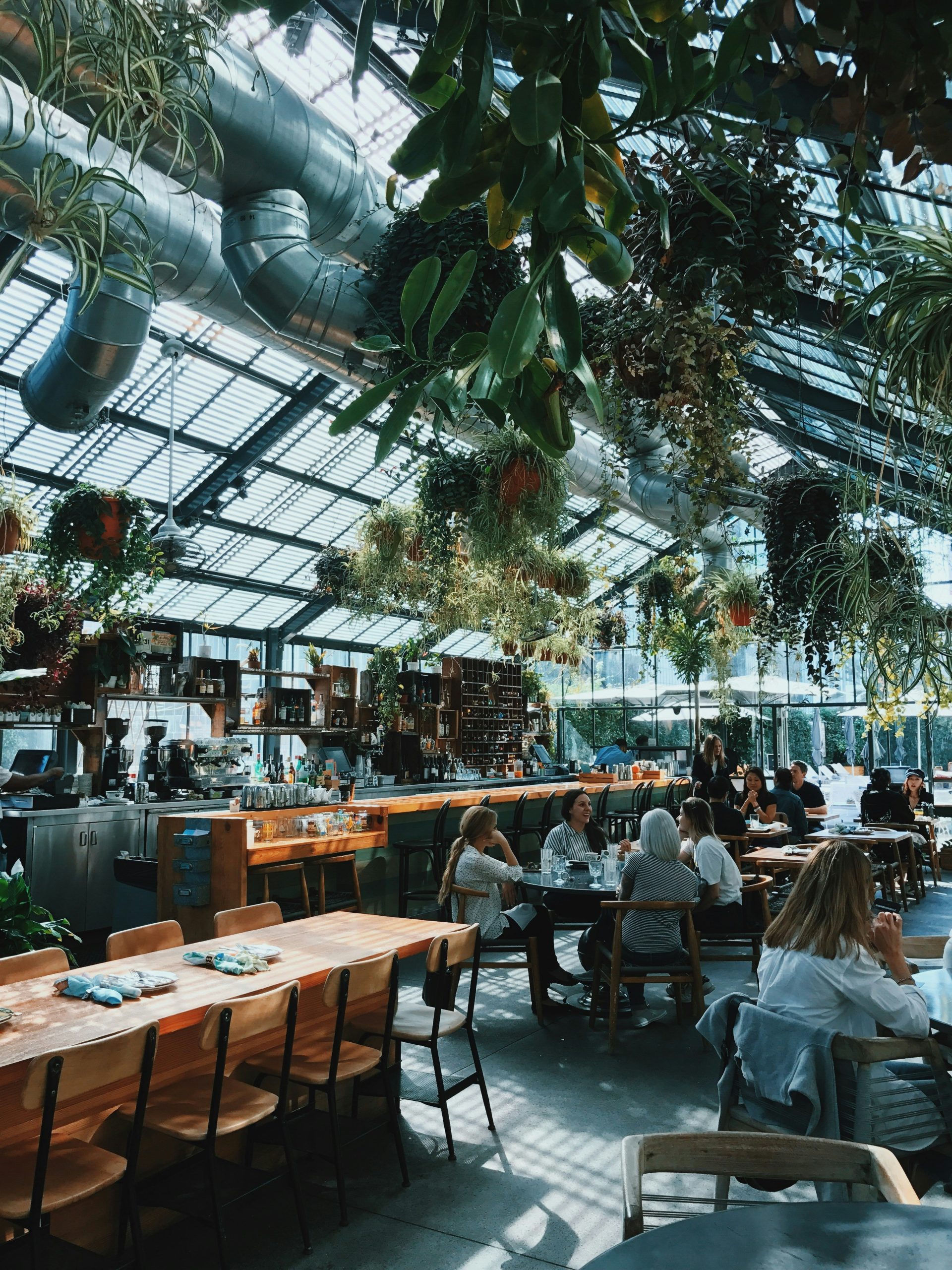

The LINE Hotel, Los Angeles – Knibb Design
c. The rooms
Size
Above all, rooms in 4* hotels must be at least 16m2, and 24m2 for 5* hotels.
Clever layouts, made-to-measure solutions and dual-purpose furniture can help optimize space.
To begin with, natural light is the best choice.
In addition, circulation must be spontaneous, and second-use furniture (armchairs, small tables, etc.) is not recommended for smaller rooms.
The bathroom is also an important element, and customers are paying more and more attention to it.
Whether bath or shower, it needs to be well-equipped, easy to maintain and modern.
Often without natural light, lighting must be well chosen.
Noble materials such as marble are also highly appreciated.
Finally, for larger bedrooms, you can afford more imposing furniture.
For example, you can open up the bedroom/bathroom area and install a large walk-in wardrobe.
Orientation
Of course, when there are a lot of rooms, it’s not always possible to orient them ideally.
In the first instance, it’s generally preferable to orient rooms towards the east, where the heat is not too great but the light is quite important.
It’s essential to orient your suites in the best possible way, so that the rooms can benefit from maximum sunlight .
For rooms that can’t be ideally oriented, you’ll need to find a way to maximize the entry of light.
You can use light colors (white, light gray, pastel) on the walls, and a variety of lighting (ceiling lights, bedside lamps, spotlights, neon) so that customers can choose the mood they want to set in the room (subdued, daylight effect…).
You’ll also need to install air-conditioning and heating systems in each room.
This will compensate for orientation problems and ensure a constant temperature that can be adjusted to suit guests’ needs.
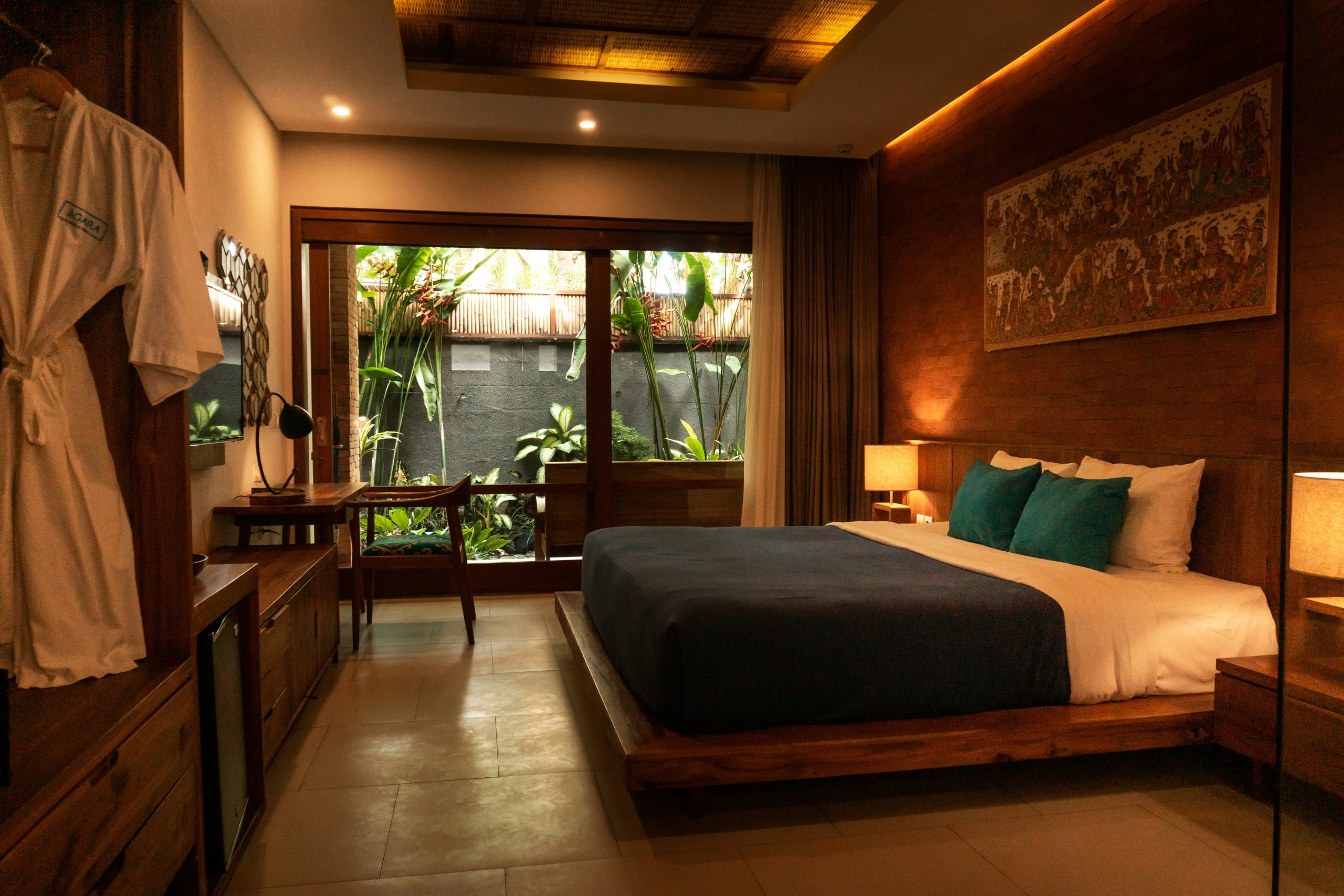

Sagara Candidasa – Bali
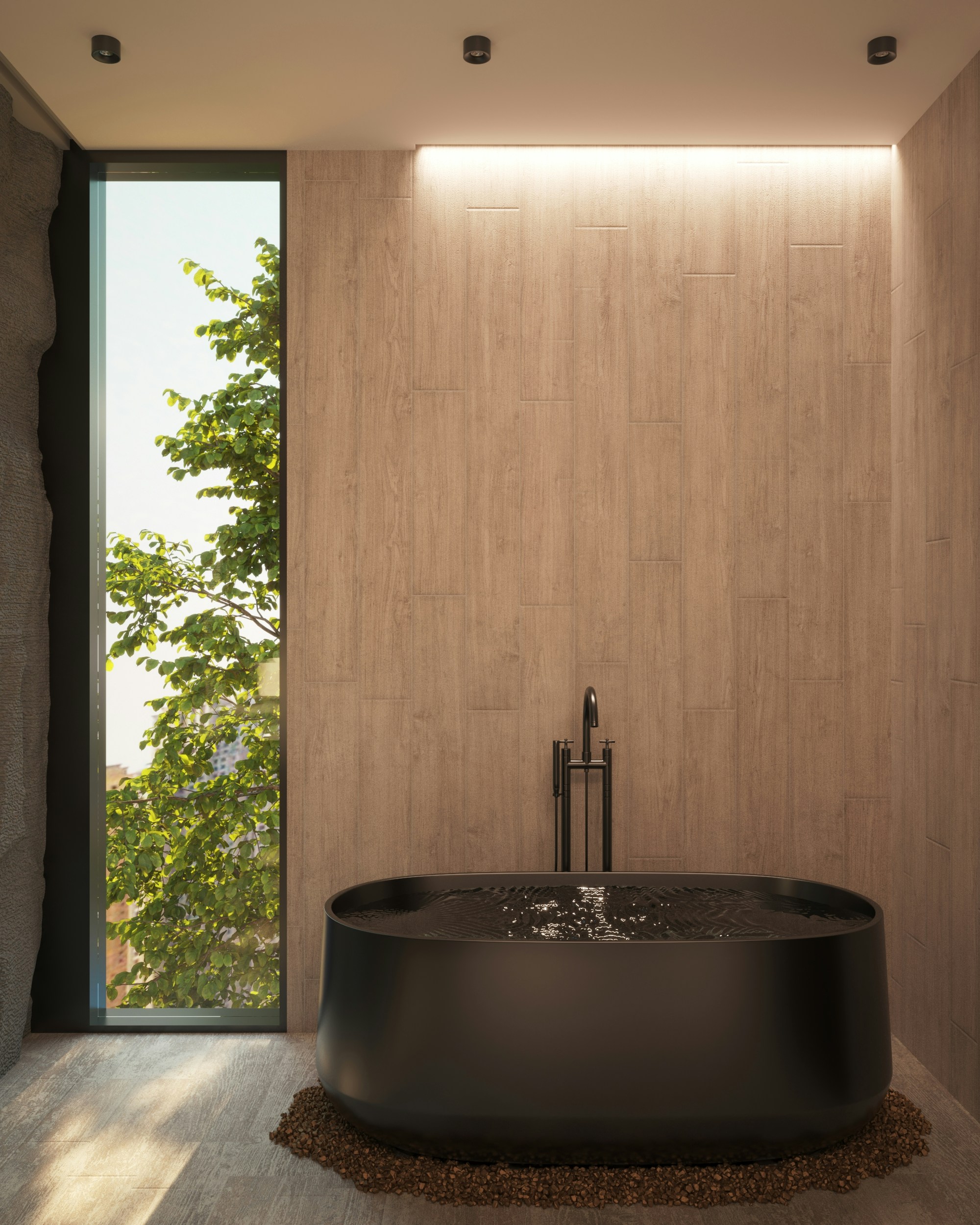

d. Compliance of an hotel with upgrading
Accessibility compliance ERP
First and foremost, establishments open to the public must be accessible to the disabled. These rules apply not only to the interior of the establishment, but also to access to the building, parking spaces, furniture and equipment.
However, exceptions may be made, depending on certain heritage conservation constraints.
Conformity fire ERP
Firstly, to guarantee customer safety, the establishment must allowrapid evacuation of customers if necessary, as well asat least two safe exits.
An access for emergency services must also be provided.
In addition, lighting must be electrically operated, and elevators or freight elevators, as well as electrical, gas, heating and ventilation systems, must be sufficiently safe and functional.
Compliance with ‘stars’ specifications
To move upmarket and earn an extra star, a hotel must comply with certain rules and criteria.
Room size, comfort and service quality are all taken into account when classifying a hotel.
In fact, 240 selection criteria now exist, including accessibility for the disabled and sustainable development.
From the soundproofing of rooms, to the size of beds, lighting and the style of mirrors chosen for bedrooms, there are numerous criteria to be met in order to move upmarket.
4. The architect's mission
Building a hotel is a major investment , and the construction work can take several years, so it’s essential to entrust the project to a trusted architect.
He or she is there to support you from the purchase of the land, through soil and feasibility studies, right up to the end of the project.
For a hotel renovation, he’ll also be able to take the existing building into account and enhance it.
The architect’s mission goes far beyond the simple realization of the project: he not only contributes his expertise, but also acts as an advisor.
Through this role, he can propose solutions and alternatives to the problems encountered.
5. The BAM Concours mission
Managing a hotel construction and refurbishment project while continuing to run your business can quickly become complex.
What’s more, it’s not always easy to find the right architect to work with you.
That’s why we recommendorganizing an architectural competition for your project.
This will allow you to explore different visions for the design of your hotel before committing yourself to a specific architect.
And, above all, to choose the architect who best meets your technical and aesthetic expectations.
At Because Architecture Matters, we’re with you every step of the way:
- First of all, we work together to draw up the competition brief and rules, guaranteeing the success of the contest.
- Next, we publicize the architectural competition widely in France and internationally, and create a dedicated website.
- Secondly, we manage the applications via a dedicated web application, and then analyze all the applications received to present you with only the most relevant projects.
- Finally, we organize the jury for the architectural competition.
- Last but not least, we can act as yourproject manager throughout the construction phase, right up to handover, to ensure that everything runs smoothly.
6. What type of architect should I choose for a hotel construction or renovation project?
Because Architecture Matters gives you the opportunity to work with the best architects, many of whom specialize in the hotel industry.
There are many advantages to choosing an architect who specializes in the hotel industry.
Firstly, hotel construction or renovation is a technical undertaking, so there’s nothing better than an expert in the field to carry out your project.
What’s more, since they’re used to working on high-budget projects, hotel architects can help you keep your budget under control.
Do you have a hotel project in mind?
Describe your projectOur hotels and restaurants projects,
Find out more about our current projects and the stories of the clients we’ve worked with on their hotels and restaurants construction or renovation projects.
Château de Beaucastel: Renovation and extension
Delivery in 2024
Château Lafite Rothschild: Renovation and extension of a winery
Delivery in 2025


